Removal Procedure
- Unlock the steering column so that the steering linkage is free to move.
- Raise the vehicle. Support the vehicle with suitable safety stands. Refer to Lifting and Jacking the Vehicle in General Information.
- Remove the 2 front tire and wheel assemblies. Refer to Tire and Wheel Removal and Installation in Tires and Wheels.
- In order to prevent the drive axle from turning, insert a drift through the brake caliper and into one of the rotor vanes.
- Remove the axle nut and washer.
- Remove the drift from the brake rotor. Support the caliper with a piece of wire in order to prevent damage to the brake hose.
- Remove the rotor. Refer to Front Brake Rotor Replacement in Disc Brakes.
- Remove the brackets from the upper control arm holding both the ABS wire and the brake hose.
- Remove the ABS bracket located on the top of the upper control arm ball joint.
- Strap the frame to the hoist in order to prevent movement.
- Position a safety stand under the lower control arm.
- Support the weight of the steering knuckle assembly and lower control arm with a safety stand.
- Disengage the wheel drive shaft from the hub by placing a brass drift against the outer end of the drive axle in order to protect the threads. Sharply strike the brass drift with a hammer. Do not attempt to remove the axle at this time.
- Support the steering knuckle and assembly with a piece of wire in order to prevent damage to the outer tie rod and ABS wire.
- Remove the upper ball joint. Refer to Upper Control Arm Ball Joint Replacement in Front Suspension.
- Remove the shock absorber from the lower mount only. Refer to Shock Absorber Replacement in Front Suspension.
- Remove the lower ball joint. Refer to Lower Control Arm Ball Joint Replacement in Front Suspension.
- Remove the axle from the steering knuckle assembly.
- Remove the front differential carrier shield. Refer to Shield Replacement in Front Drive Axle.
- Disconnect the left side wheel drive shaft from the differential carrier by placing a block of wood or a brass drift against the tripot housing. Firmly strike the block of wood outward from the case with a hammer. Strike hard enough in order to overcome the snap ring pressure holding in the shaft.
- Disconnect the right side wheel drive shaft from the differential carrier by placing a block of wood or a brass drift against the tripot housing. Firmly strike the block of wood outward from the case with a hammer. Strike hard enough in order to overcome the snap ring pressure holding in the shaft.
- Pull the axle straight out from the differential carrier.
- Support the drive axle so as not to tear the boot.
- Remove the drive axle.
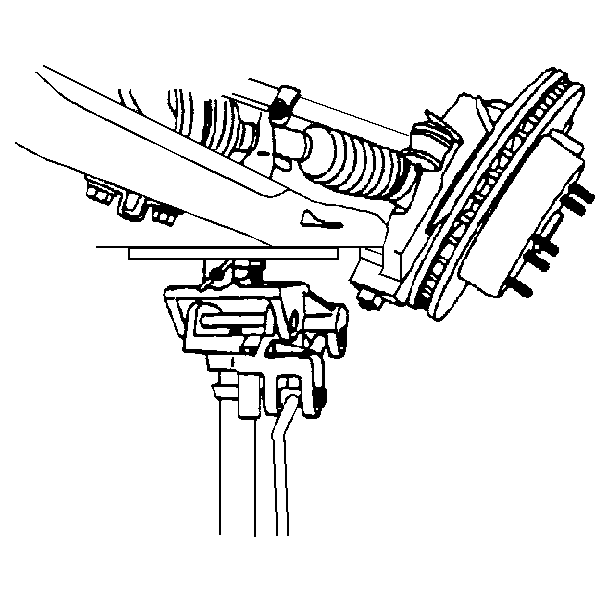
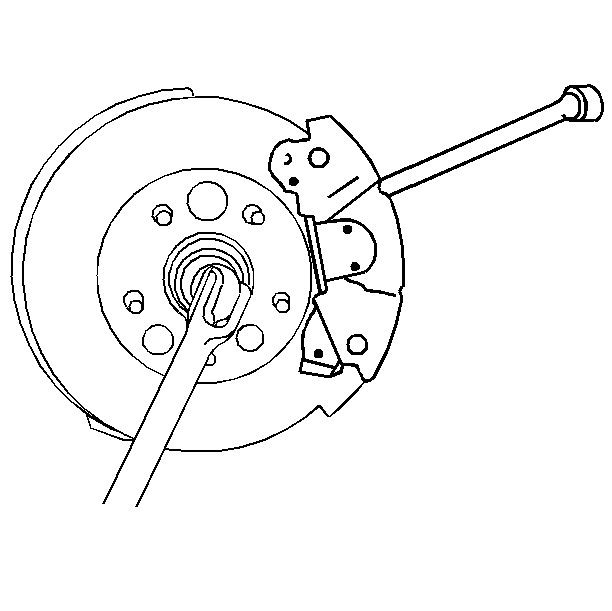
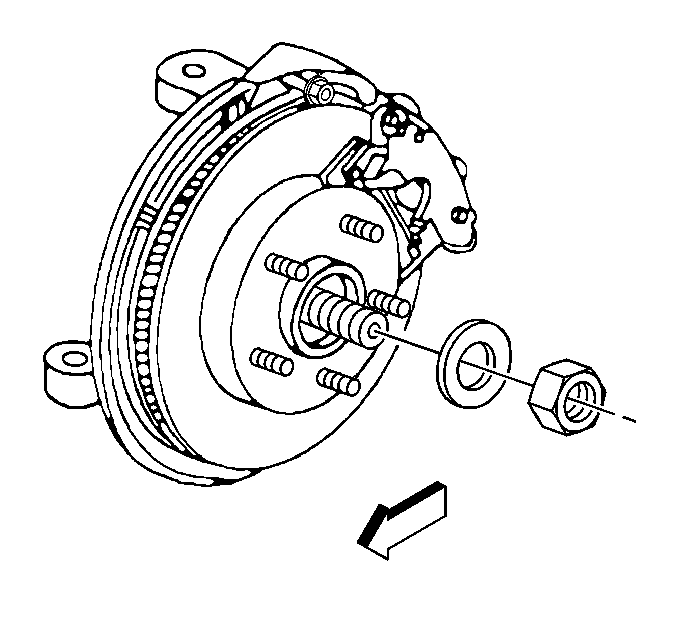
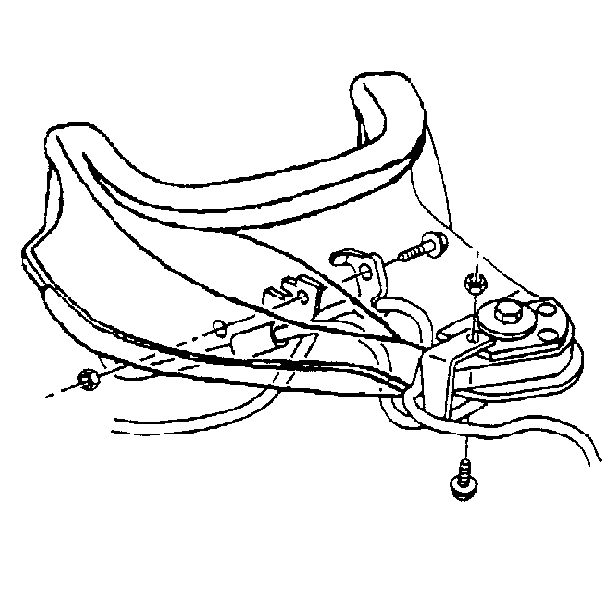
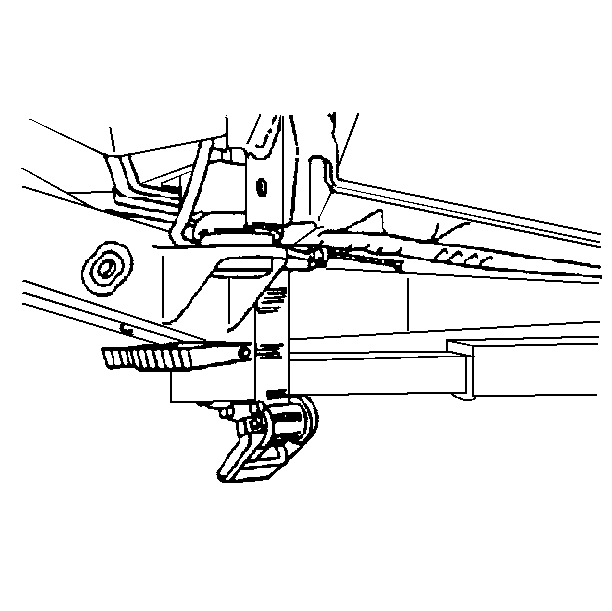

Notice: Be careful that the safety stand does not damage or bend any components it may contact.
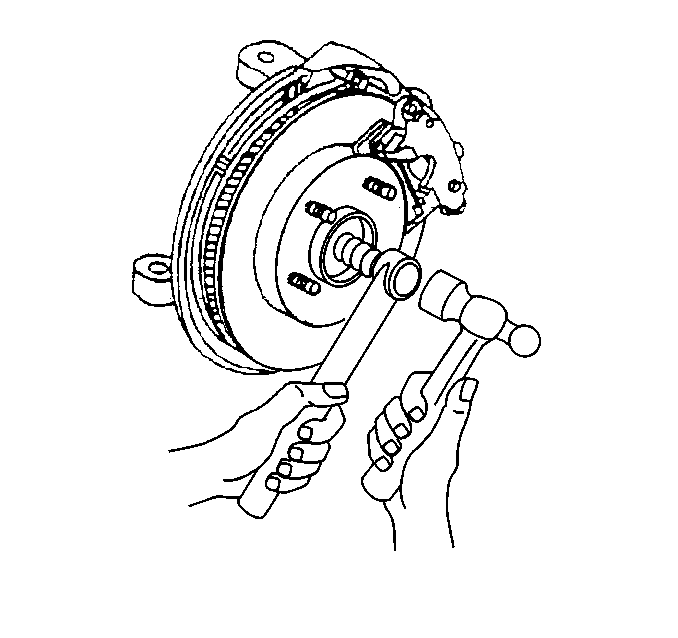
Important: After the lower ball joint is loose from the knuckle, simultaneously push the axle shaft in toward the differential carrier in order to allow room for the knuckle and assembly to be removed.
Important: Lower the safety stand from the lower control arm in order to relieve the pressure of the torsion bar and in order to allow for clearance.
Do not damage the axle seal during removal of the differential carrier shield.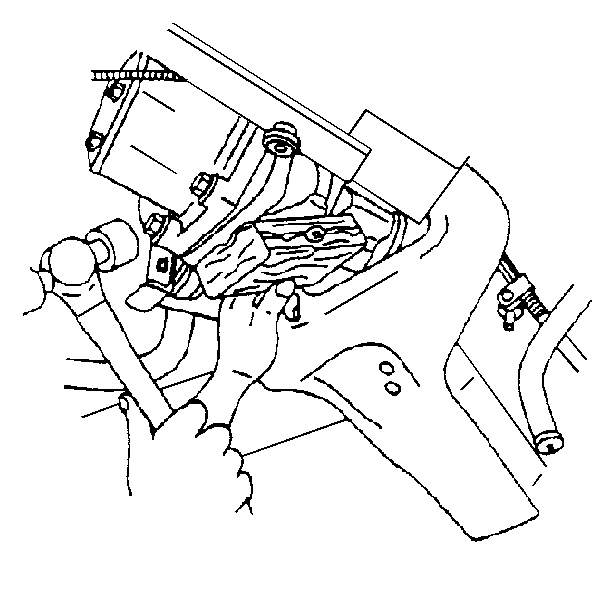
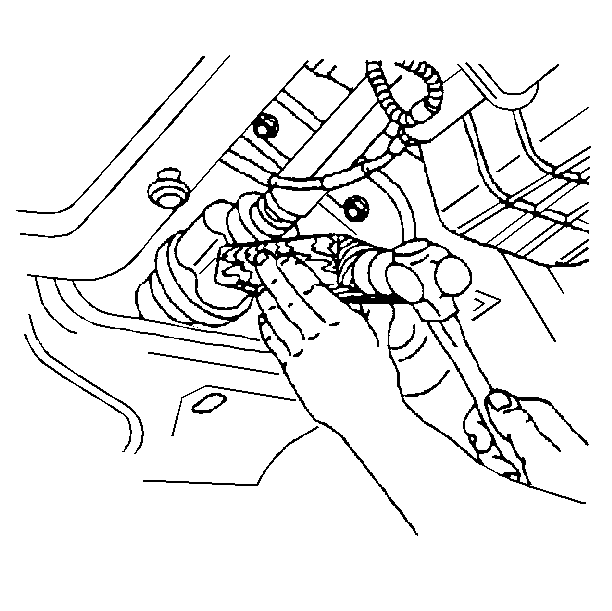
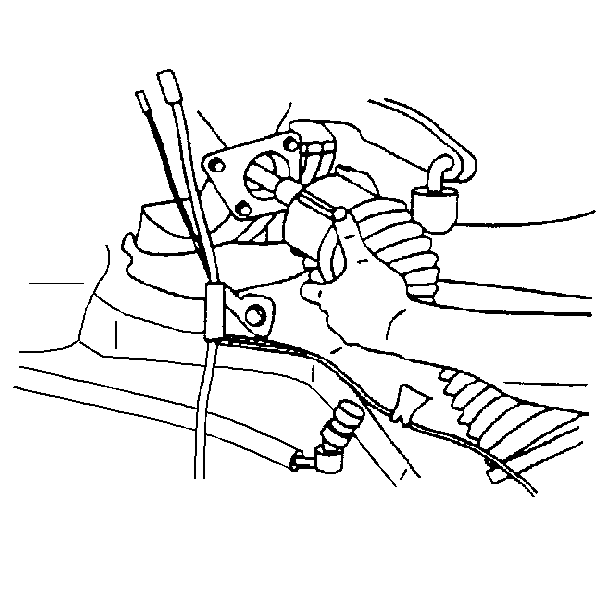
Caution: To prevent personal injury and/or component damage, do not allow the weight of the vehicle to load the front wheels, or attempt to operate the vehicle, when the wheel drive shaft(s) or wheel drive shaft nut(s) are removed. To do so may cause the inner bearing race to separate, resulting in damage to brake and suspension components and loss of vehicle control.
Installation Procedure
Important: Do not lubricate or damage the differential carrier axle seals during installation.
- In order to prevent damage to the boot, cover the following components with a shop towel:
- Install the wheel drive shaft to the differential carrier.
- Raise the safety stand in order to support the weight of the lower control arm.
- Assemble the lower ball joint. Refer to Lower Control Arm Ball Joint Replacement in Front Suspension.
- Install the lower shock mount. Refer to Shock Absorber Replacement in Front Suspension.
- Install the upper ball joint. Refer to Upper Control Arm Ball Joint Replacement in Front Suspension.
- Install the drive axle washer and nut.
- Install the wheel drive shaft nut.
- Install the ABS bracket located on the top of the upper control arm ball joint.
- Install the brackets from the upper control arm holding both the ABS wire and the brake hose.
- Install the rotor. Refer to Front Brake Rotor Replacement in Front Disc Brakes.
- Install the 2 front tire and wheel assemblies. Refer to Tire and Wheel Removal and Installation in Tires and Wheels.
- Remove the safety stands.
- Install the front differential carrier shield. Refer to Shield Replacement in Front Drive Axle.
- Remove the strap from the frame.
- Lower the vehicle.
| • | The shock mounting bracket |
| • | The lower control arm ball stud |
| • | All other sharp edges |

| 2.1. | With both hands on the tripot housing, align the splines on the shaft with the differential carrier. |
| 2.2. | Center the drive axle into the differential carrier seal. |
| 2.3. | Firmly push the shaft straight into the differential carrier until the snap ring seats into place. |

Notice: Be careful that the safety stand does not damage or bend any components it may contact.
Important: Slightly start the knuckle onto the drive axle while simultaneously guiding the lower ball stud to the proper location on the steering knuckle.

Notice: Use the correct fastener in the correct location. Replacement fasteners must be the correct part number for that application. Fasteners requiring replacement or fasteners requiring the use of thread locking compound or sealant are identified in the service procedure. Do not use paints, lubricants, or corrosion inhibitors on fasteners or fastener joint surfaces unless specified. These coatings affect fastener torque and joint clamping force and may damage the fastener. Use the correct tightening sequence and specifications when installing fasteners in order to avoid damage to parts and systems.
Tighten
Tighten the nut to 140 N·m (103 lb ft).

